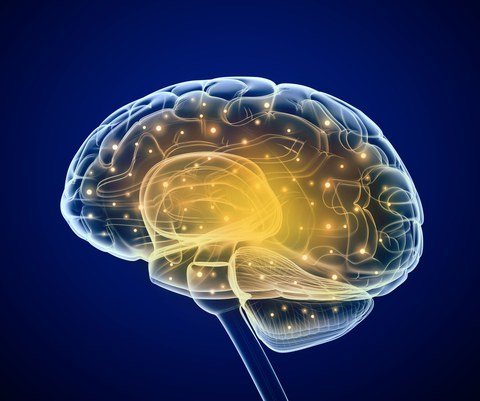Feb 14, 2025
How our brain manages the perfect balancing act: Study conducted by Dresden university medicine provides new insights
Our brain is remarkable for its unique ability to process information efficiently and to adapt flexibly to changing challenges. So far, science has assumed that this was based on two separate principles: Criticality, the balancing act between structure and chaos, and efficient coding, in which the brain reduces redundant signals and uses its resources with the utmost precision. However, a study co-authored by Dresden university medicine and published in the Proceedings of the National Academy of Sciences (PNAS) shows that the two principles could be more closely linked than previously assumed.
The "Signatures of criticality in efficient coding networks" study provides new insights into the fundamental mechanisms of brain function. An international research team from Dresden, Tübingen, Paris and Shanghai developed a mathematical model to simulate a neural network that mimics the functioning of real brain cells. Unlike in previous studies, the network was not tuned directly towards a critical state, but optimized to process information as efficiently as possible – similar to our brain in everyday life.
One of the key experiments involved varying the level of noise in the network. In this context, “noise” refers to an amount X of random interference in the system. The researchers hoped to find out how these disturbances affect the capabilities of the network.
The results of the simulation were unequivocal: medium noise levels mean maximum performance. The network showed the best information processing at a moderate level of interference. At the same time, typical signatures of criticality were observed, including so-called “neural avalanches.” These cascades of activity follow a characteristic distribution of size and frequency.
What became evident as well was that too much or too little noise is detrimental. In the case of too low a noise level, the neurons synchronized too much, which limits the flexibility of the network. On the other hand, too much noise led to chaotic, inefficient activity patterns.
So, peak performance and criticality emerged simultaneously – at a point of balance where precision and flexibility were perfectly aligned. The model enabled the scientists to demonstrate that criticality is not a random phenomenon, but a natural side effect of optimal information processing.
"Evidently, our brain has evolutionarily adapted to this precise balance between structure and chaos," explains Jun.-Prof. Dr. Shervin Safavi, first author and head of the Computational Machinery of Cognition (CMC) Lab at TU Dresden's Faculty of Medicine and the Clinic for Child and Adolescent Psychiatry at the University Hospital. "This state not only enables efficient information processing, but also prepares our brain to flexibly respond to changing demands."
If this balance is disturbed, this may result in mental disorders. In schizophrenia, for instance, we often see hyperconnectivity, which leads to chaotic neuronal activity and disrupted thinking. By contrast, depression or obsessive-compulsive disorder suggest excessive structure and rigidity in neural circuits, meaning that thought patterns repeat and make it more difficult to adapt to new situations. A better understanding of this balance could open up new avenues for more targeted treatments that restore the balance of brain function.
"Studying brain criticality could help us to uncover principles that not only improve our understanding of cognition and mental health, but also enable us to develop more robust and adaptable artificial intelligence systems," Shervin Safari hopes. "This way, neural networks that are aligned with criticality could achieve greater computational efficiency and resilience, mirroring the brain's remarkable ability to balance stability and flexibility."
Publication: Safavi, S., Chalk, M., Logothetis, N. K., & Levina, A. (2024). Signatures of criticality in efficient coding networks. Proceedings of the National Academy of Sciences, 121(41), e2302730121. https://www.pnas.org/doi/10.1073/pnas.2302730121
Contact:
Jun-Prof. Dr. Shervin Safavi
Computational Neuroscience
Clinic for Child and Adolescent Psychiatry, Faculty of Medicine, TU Dresden
/
Tel.: +49 351 45817367


